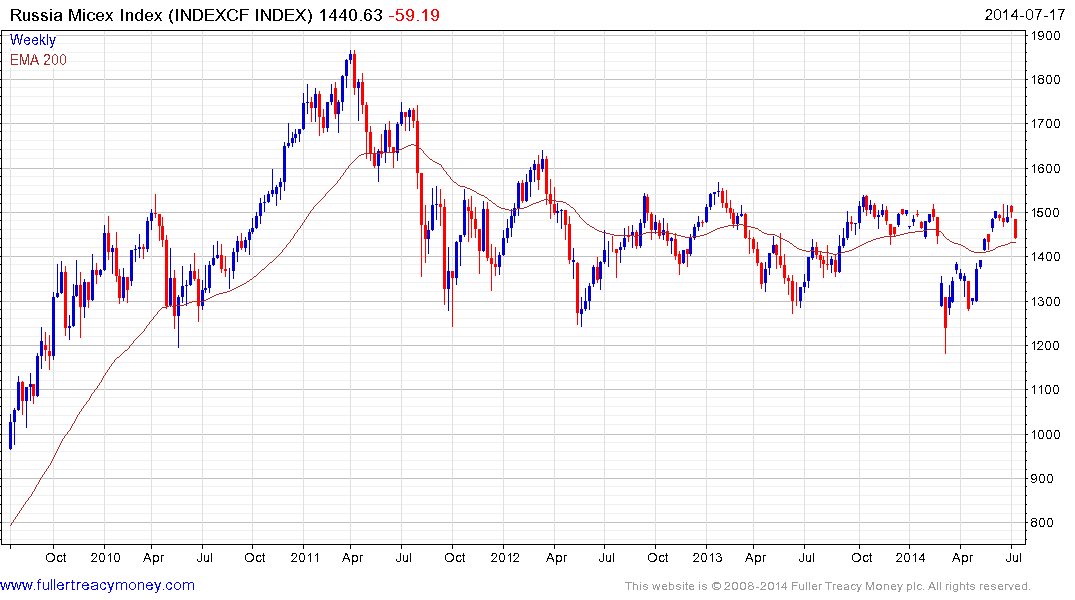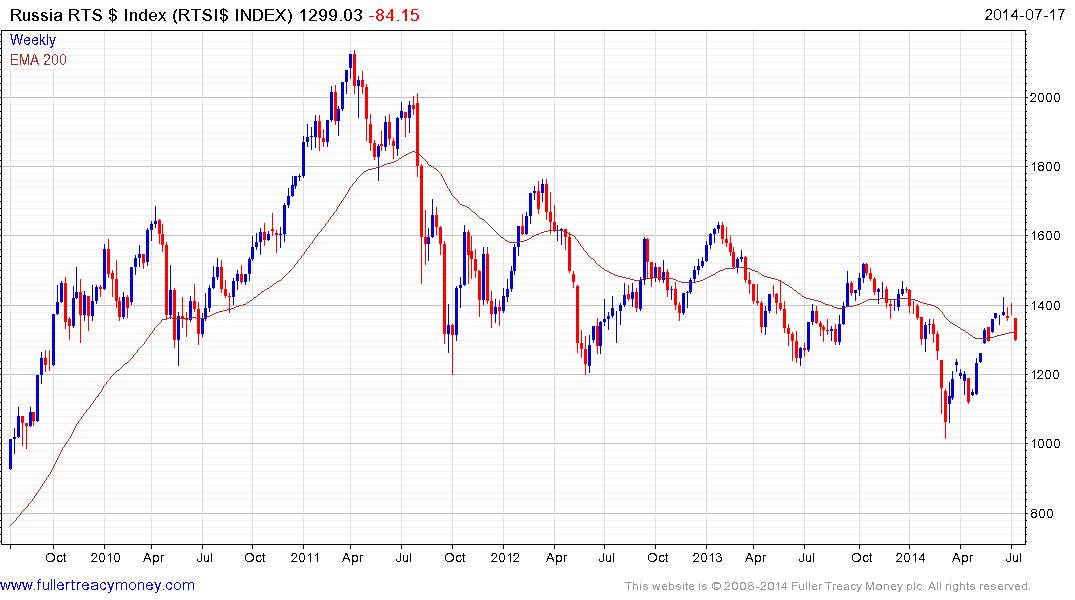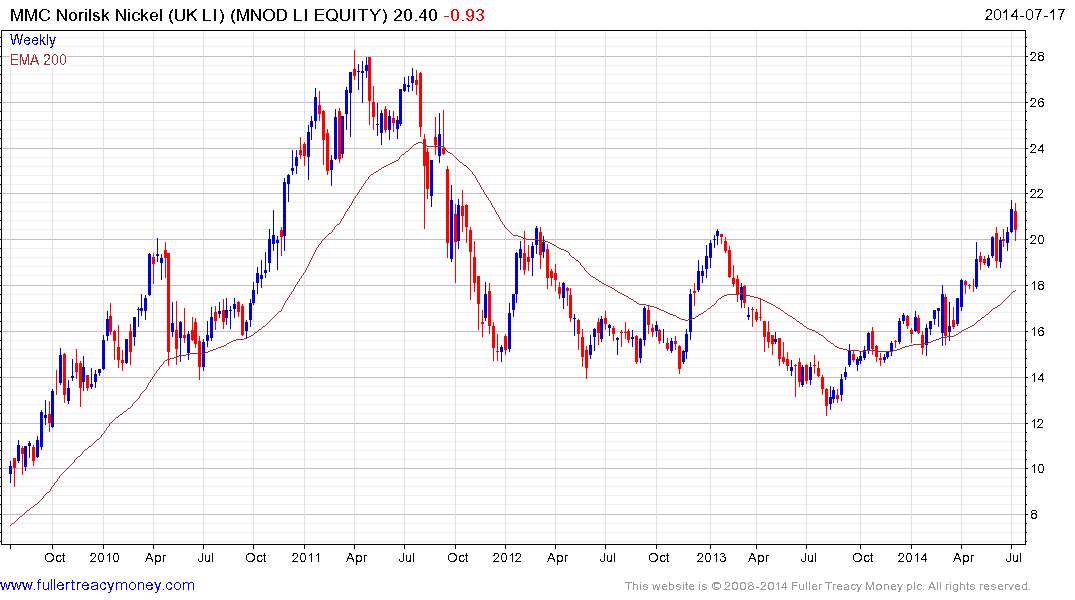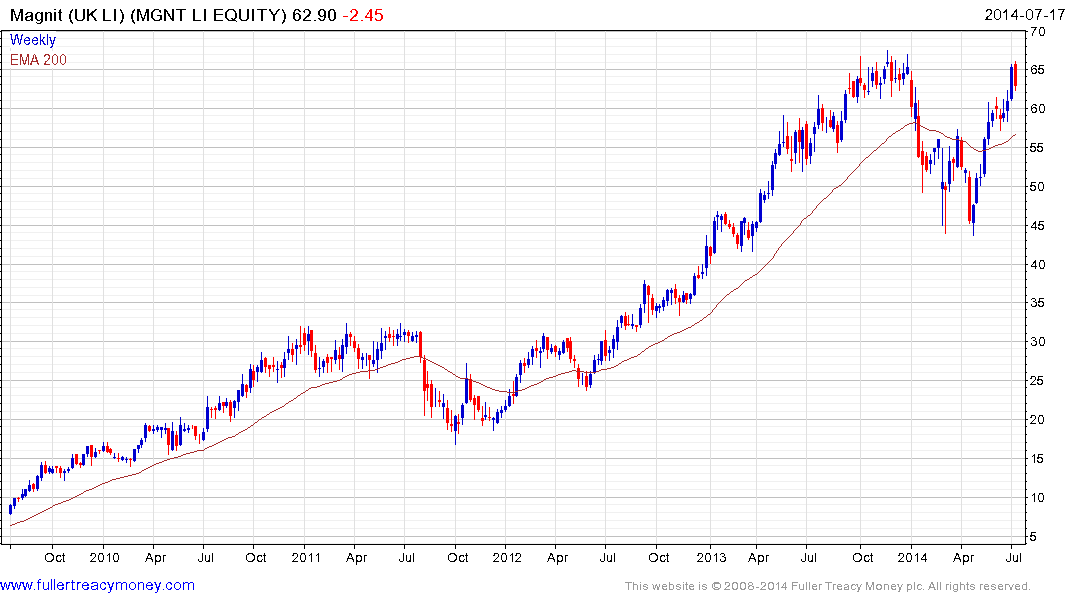Ruble Falls Most Since Crimea on Sanctions as Russia Stocks Drop
This article by Halia Pavliva, Vladimir Kuznetsov and Ksenia Galouchko for Bloomberg may be of interest to subscribers. Here is a section:
Russian companies face $3.93 billion of dollar-bond maturities by year-end, data compiled by Bloomberg show. The central bank said it has enough instruments to support individual financial institutions as well as broader financial stability, according to an e-mailed statement. The main consequences related to refinancing are for long-term loans and will have largely a delayed effect, it said.
Shares of Rosneft lost 4.6 percent and Novatek slid 5.2 percent. Government debt risk rose to the highest since May.
Credit-default swaps insuring against losses on Russia’s sovereign debt jumped 27 basis points to 210 basis points, according to data compiled by Bloomberg. A total of 9,726 contracts covering a record $9.8 billion were outstanding as of July 11, according to the Depository Trust & Clearing Corp.
?That’s up from about $5.5 billion at the start of 2014 and the sixth most among 1,000 companies and countries tracked by DTCC.
The response of Western governments to Russia’s annexation of Crimea and continued involvements in Ukraine has been relatively muted. The Russian administration appears to believe they can weather any economic sanctions that might arise from their actions. They may reason that since the response to date has been limited to personal attacks rather than broad spectrum sanctions, which would run the risk of pressuring global commodity supplies, that sanctions can be viewed as the price paid for the territory gained.
The shooting down of a Malaysia Airlines flight over Ukraine today has the potential to reignite concerns over the bubbling up of geopolitical risk in the region regardless of whether it is shown to have been a Russian missile that brought it down. This has at least contributed to weakness today in stock markets and the bounce in crude oil from a short-term oversold condition.

The Micex Index has recovered this year’s earlier decline and returned to test the upper side of the three-year range where it has encountered at least near-term resistance today.

The US Dollar denominated RTS Index reflects the underperformance of the Ruble over the same period. The Index continues to hold a progression of lower rally highs and is now pulling back from the 1400 area.
Against a background of deteriorating relations with the West, it is probably worth looking at some of the companies which have so far been immune from sanctions.

As one of the world’s most pivotal suppliers of both palladium and nickel, Norilsk Nickel has trended higher since failing to sustain the break below $14 in August 2013. It pulled back somewhat yesterday but a break in the yearlong progression of higher reaction lows, currently near $19.65 would be required to question medium-term demand dominance.

Magnit is Russia’s answer to Wal-Mart and the UK listing pulled back sharply in January to break the two-year uptrend. It has rallied back to test the high and at least some consolidation of recent gains is probable in this region. However, a sustained move below $55 would be required to signal a broader ranging phase.
Back to top


